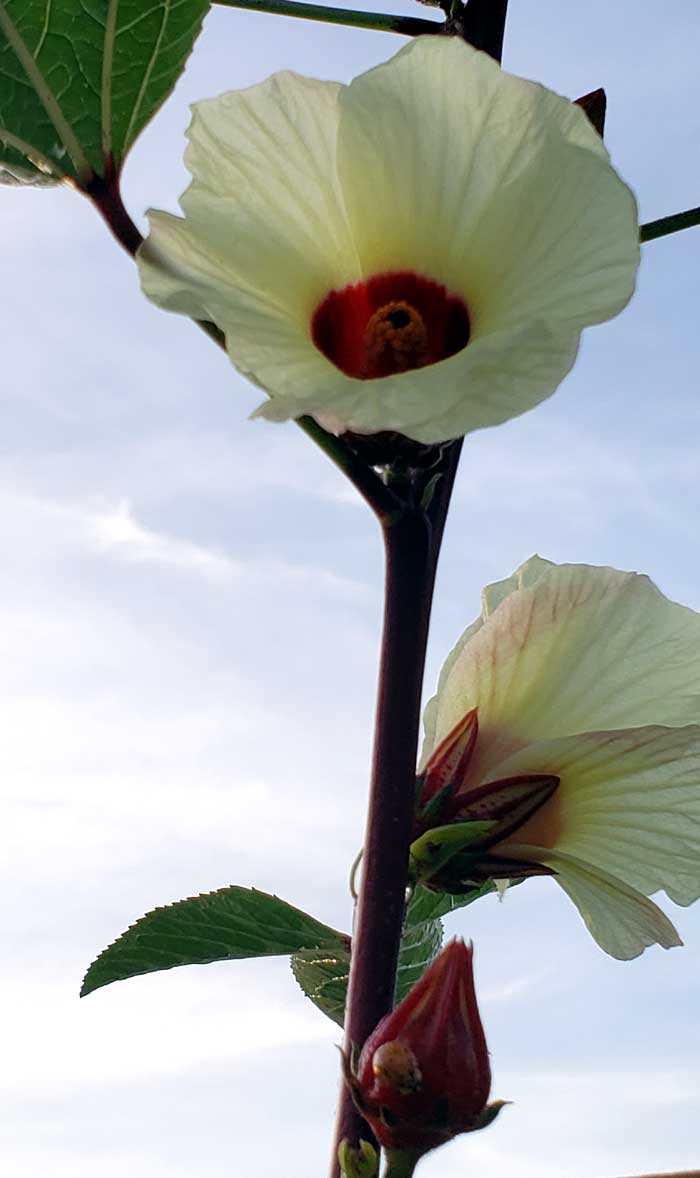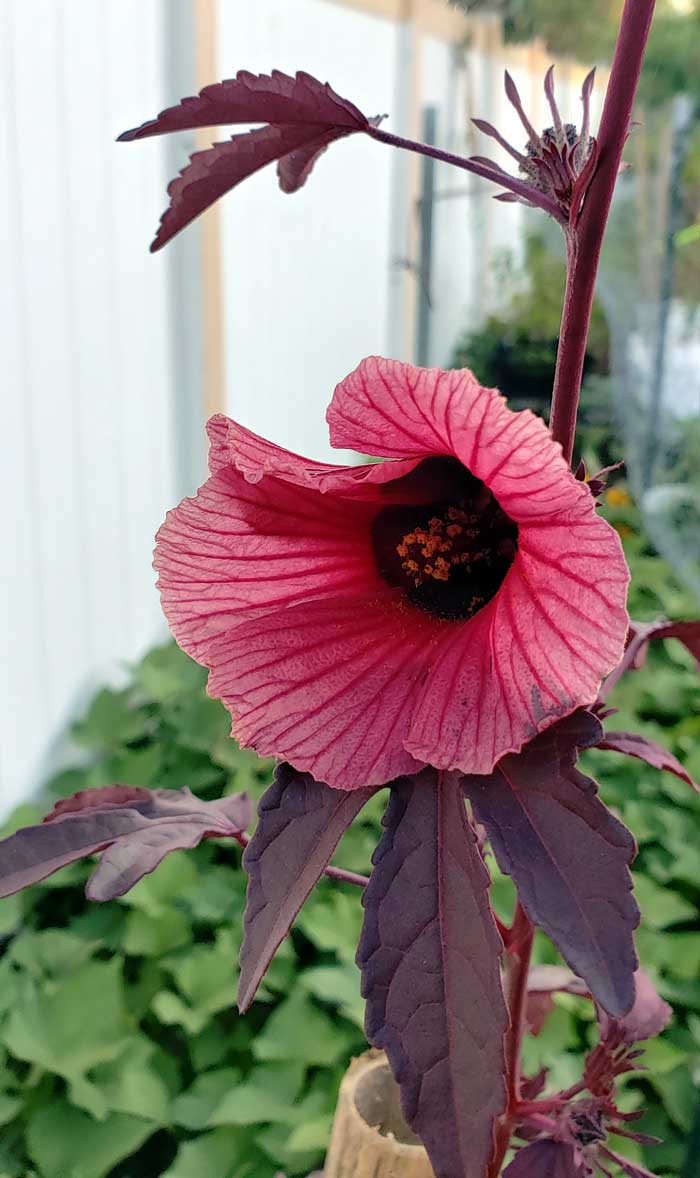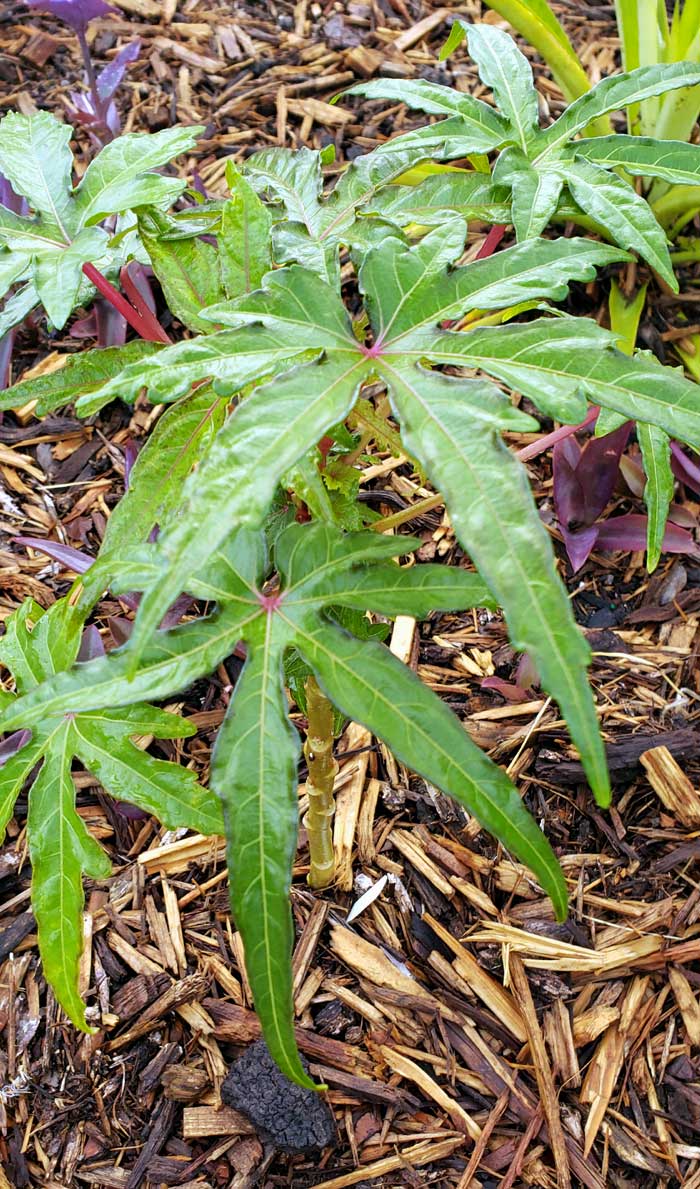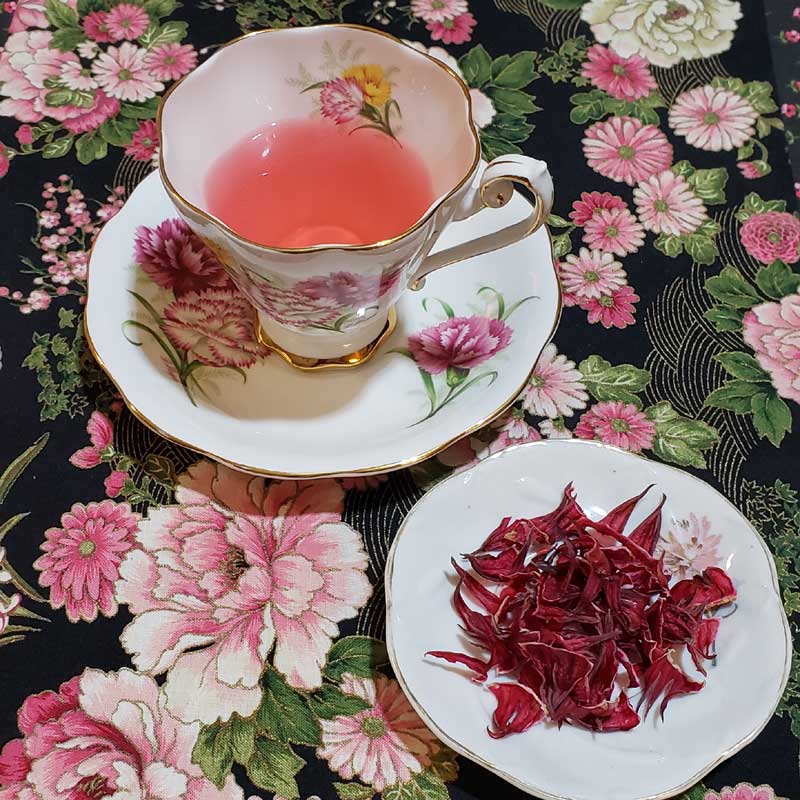Do you know which is which?
When I first started gardening here in sub-tropical Central Florida, I didn’t have a clue to which type of edible hibiscus I should grow. I wondered… were the red hibiscus flowers in my front yard edible? Was sorrel the name of a beverage or the name of a plant? And what, exactly, was a Florida cranberry?
It took some time, exploring, and garden experimenting, and now, I want to share with you what I’ve learned about these wonderful plants, and how each of them can be used in edible landscaping.
In This Article:
Roselle
Roselle is that magical plant that I was looking for when I started sub-tropical gardening. It was the “zing” in Zinger Tea that many brands in the grocery stores sell. In the Caribbean, it was an infamous Christmas drink, Jamaican Sorrel. Its deep red calyxes looked like a cranberry colored flower. I couldn’t wait to grow them!
Roselle is a member of the mallow plant family, a relative to hibiscus and okra. Along with several other hibiscus, it’s been called: Florida cranberry, red sorrel, Jamaica sorrel, and edible hibiscus. Its botanical name is Hibiscus sabdariffa.
This shrub-like plant can be grown as an annual or perennial, depending on the climate. It produces a creamy white flower with a deep red center.The cranberry-red calyx of each flower is what the plant is known for. These are harvested for edible and medicinal uses. The calyxes can be made into teas and other beverages, jams and preserves. The flowers and leaves are also edible.
Roselles have a pretty foliage and plenty of fall blossoms that attract bees and other pollinators. They can grow up to 7-8 feet tall if not pruned, and are a great annual for your flowerbed or hedge.

Cranberry Hibiscus
The cranberry hibiscus is a plant that is sometimes confused with the roselle, which some people refer to as the Florida cranberry. However, it is called “cranberry” due to its tangy flavor and cranberry-colored leaves.
This plant is a member of the mallow family in a sub-species known as hardy hibiscus. These plants tolerate colder weather better than their sub-tropical relatives. Others have called it: false roselle, maroon mallow, and red-leaved hibiscus. Its botanical name is Hibiscus acetosella.
In many cultures, the leaves are used for cooking or eating fresh. The blossoms can be steeped with tea to add color, a bit of tanginess, and several vitamins and antioxidants. Unlike the roselle, the calyxes are not used for culinary purposes.
Like other hibiscus, it has lobed leaves, and produces a single flower in regular intervals along the stem. The flowers blossom for one day and are shades of dark pink to maroon. This shrubby annual can grow as tall as six feet if left untrimmed, and will continue growing as a perennial in zones 8-11.
The cranberry hibiscus is another beautiful plant for flower beds and borders where there is a lot of sunshine. It can be trimmed to shape, and the trimmed leaves can be eaten fresh, cooked, or dried.

Edible Hibiscus – South Sea Salad Tree
This plant was introduced to me as “edible hibiscus.” Once I did further research, I learned that this plant, like the roselle, is a relative of the hibiscus. It was once classified as a hibiscus, but is now classified in the genus Abelmoschus manihot. It has also been called the sunset muskmallow, and hibiscus Manihot. I have found it most commonly known as Chief Kubo’s Salad Tree, or South Sea Salad Tree.
The leaves are very decorative in varying shades of reds and greens. It is a sub-tropical perennial that you can harvest greens from all year-round for dishes such as a salad or stir-fry. It makes a great potted plant that grows about 3 feet tall and 2-4 feet wide. It’s a nice ornamental border plant in a flowerbed too!

Resources
All of my research regarding the growth, propagation, and edible traits of these plant led to quite a list of websites. Here are the best sources I’ve found that I’d like to share with you.
Roselle
https://en.wikipedia.org/wiki/Roselle_(plant)
https://gardeningsolutions.ifas.ufl.edu/plants/edibles/vegetables/roselle.html
https://edis.ifas.ufl.edu/publication/mv126
https://digital.library.unt.edu/ark:/67531/metadc9193/m1/4/
https://www.southernexposure.com/products/roselle-thai-red/
https://onegreenworld.com/product/longevity-spinach/
https://www.gardeninginthedesert.com/how-to-grow-roselle-hibiscus-sabdariffa/
Cranberry Hibiscus
https://en.wikipedia.org/wiki/Hibiscus_acetosella
https://www.southernexposure.com/products/cranberry-hibiscus/
https://www.gardeningknowhow.com/ornamental/flowers/hibiscus/growing-cranberry-hibiscus-plants.htm
https://www.anaturalfarm.com/cranberryhibiscus
https://www.thespruce.com/growing-hibiscus-1403333
https://growerjim.blogspot.com/2010/11/hibiscus-acetosella.html
Edible Hibiscus
https://en.wikipedia.org/wiki/Abelmoschus_manihot
https://onegreenworld.com/product/chief-kubos-south-sea-salad-tree/
https://plantersplace.com/just-veggies/growing-south-sea-salad-tree/
https://www.greendreamsfl.com/online-store/Chief-Kubos-Pride-Abelmoschus-manihot-p212369277
https://www.gardenia.net/plant/abelmoschus-manihot

In Summary…
Now that you know which hibiscus (or hibiscus cousin) is which, do you have a favorite you want to try growing? Or perhaps you’ve learned something new about an old favorite?
I’ve enjoyed learning about and growing all three of these sub-tropical edible beauties. There is so much confusion regarding these plants and their many varieties, however, I now feel confident when I talk with others about these plants.
As an added bonus, I’d like to share with you a printable plant profile sheet that I created for each of these plants. Click here for your FREE download!
Happy gardening,
Alisa
Great Information!! Thank You